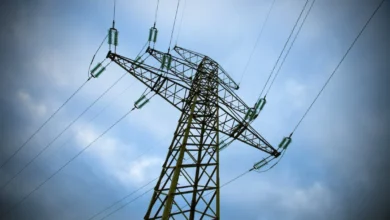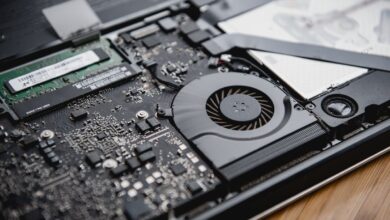What Is Photogrammetry and How Can It Help in 3D Scanning?

Have you ever scanned a major artwork or object and had completely disastrous measuring results? Large-size item scanning can be difficult since measurement mistakes build up over time. We can improve the speed and quality of data gathering and the 3D modelling process by combining photogrammetry with 3D scanning.
3D visuals have the potential to enhance consumer engagement, improve sales, and minimize returns by more closely resembling the in-person shopping experience. However, how do you go about making a three-dimensional model of your current product?
The two primary methods for capturing real-world items and producing 3D digital models that may be utilized in Augmented Reality (AR), Virtual Reality (VR), 3D web viewers, and other applications will be discussed in this post: photogrammetry and 3D scanning.
Photogrammetry.
Albrecht Meydenbauer, a Prussian architect, first used the term “photogrammetry” in his 1867 paper “Die Photometrographie.” From plane table, analogy, analytical, to digital photogrammetry, photogrammetry advances. Every stage of its growth lasts around fifteen years. Our primary area of interest in this blog is digital photogrammetry.
A measurement method called photogrammetry uses images taken from various angles to get 3D coordinates. More specifically, it triangulates the points on the topic to obtain geometric information.
Software for it can identify recurring features in images. Triangulations can be used to deduce these locations’ distances. These locations get increasingly precise the more pictures we take from various perspectives. Ultimately, a mesh and a three-dimensional model would be created from these locations.
How does photogrammetry work?
Aerial photography is analogous to photogrammetry. Using the latter, one may capture pictures and obtain a broad understanding of the geography.
However, photogrammetry is more precise when measuring distances, regions, or directions than aerial photography, which has positional mistakes. It is extensively utilized in quality control, engineering, mapping, and architecture.
The advantages and disadvantages of photogrammetry
Pros
- Because the photos convert to excellent materials and textures, photogrammetry has the advantage of producing 3D models that are more realistic. This enables the creation of precise digital twins.
- Furthermore, this technology is less costly than 3D scanners. With photogrammetry, all you need is a camera and a room with adequate lighting to record and digitally reproduce items. A studio may need to use a multi-camera setup if the subject is human or animal.
Cons
- The inability of photogrammetry to discern visual patterns in components with smooth, flat, or solid coloured surfaces makes them challenging to photograph. This powder can be used to give glossy or smooth surfaces some texture as a cure
- A 3D scanner is a preferable option, nevertheless, if you are prohibited from altering the object’s surface.
What is scanning in three dimensions / 3D scanning?
Analyzing a real-world object to best capture its shape and appearance is the process of 3D scanning. To create digital 3D representations, or “digital twins,” of actual items, 3D scan data is utilized.
There are several kinds of 3D scanners, and each has expenses, benefits, and limits of its own. Structured light and laser scanners are the two most often used varieties. Both scanning methods yield very precise measurements and may be applied to CAD data creation for production as well as part reverse engineering.
Pros and Cons of 3D Scanning
Pros
- 3D scanning is dependable, accurate, and quick.
- Exact measurements of locations can be obtained quickly and with a degree of accuracy that is not achievable with traditional methods thanks to three-dimensional data. It is impossible to make better decisions than with real-time, intelligent, and accurate data.
Cons
- The scanner’s output can generate large amounts of memory use.
- Any image that the scanner digitizes can subsequently be used in electronic documents. Throughout the scanning and digitization process, some image quality is lost.
What is the use of photogrammetry in 3D scanning?
Lasers are used by the 3D laser scanner to scan an object’s geometry and get its 3D data. A dense point cloud is produced when every point is recorded, and this cloud may be utilized to build a three-dimensional model.
Large-scale things like wind turbines, aeroplanes, and skyscrapers are challenging for 3D scanners to scan, while the majority of scanners on the market can scan objects with sizes within a range of one meter. This is the application of photogrammetry.
The first step in using photogrammetry to measure an item is to surround it with coded targets and place reflecting markers on its surface. For reference, a scale bar is also required. After that, pictures are taken from various angles, being careful to take overlapped pictures.
These images will be useful in creating an overall 3D geometry of the object. Then, with a 3D scanner, the surface features of the item might be recorded.
The best results may be obtained from a photogrammetry system if it uses full-frame, high-resolution cameras. Its vast shooting area and accurate algorithms help it minimize connection faults that build up with distance.
How can Scantech help you?
For scanning large-scale items, Scantech provides the MSCAN photogrammetry system, which has strict criteria for measurement repeatability and precision. The MSCAN photogrammetry device can reach up to 0.015 mm/m of volumetric accuracy whether used alone or in conjunction with portable 3D scanners.
With the KSCAN composite 3D scanner from Scantech, photogrammetry may reach new heights. It combines photogrammetry, blue laser scanning, and infrared laser scanning into a single apparatus.
It produces extremely efficient and highly reproducible scanning results with excellent details. In terms of measuring, it works well for both big and small things.
In summary
Efficient technologies such as photogrammetry and 3D scanning provide distinct advantages in capturing real-world items and producing 3D models for many purposes, including e-commerce. Overall, it’s crucial to initially take into account the kinds of items you intend to scan while selecting amongst these technologies.
The end product, regardless of whether you use photogrammetry or a 3D scanner, will be a very huge 3D file. To utilize this on the web, in AR, or in VR, optimization and conversion are needed. Fortunately, VNTANA’s proprietary algorithms fully automate this process, enabling you to publish a 3D online version with built-in augmented reality as soon as you submit a.STL or.OBJ scan.



